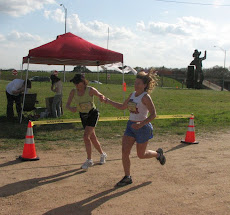If you can train for a triathlon….
If you can train for a triathlon, learn to swim a half mile, mile or more, finesse yourself into becoming one with your bicycle, or find the will to keep running all the way to the finish at 5 kilometers, 10 kilometers or 42 kilometers, then you’ve got what it takes to play the guitar, or the cello, or the horn. The techniques of goal setting, making a disciplined plan to achieve that goal and staying the course are multi-disciplinary. By that I mean that if it gets results in one discipline the same basic plan will get results in another discipline.
Conversely, if you play a musical instrument, practice regularly with goals of proficiency and artistry, you’ve got what it takes to become an athlete. Granted, a marathoner, triathlete, or speed skater might not become the next Wynton Marsalis or Itzhak Perlman or Christina Aguilera. But one can almost guarantee that application of an athlete’s discipline to learning a musical instrument will spell success while application of a musician's discipline to athletics will assist you in your fitness and competition goals.
I am a professional musician with athletic ambition. No, you will never find me on the cover of Runner's World, nor will I ever turn heads at Senior Olympics, but I do succeed at the goals I set by applying to my athletic training the exact same discipline that is necessary to be a professional musician. It’s all about problem solving, staying on task and to a significant degree just plain stubbornness. A musician has to practice on the days he would prefer to goof off. You can practice early in the day or late at night, but you have to practice regularly. An athlete can work out early or late, but she has to work out regularly in order to achieve goals.
Musicians have drills, athletes have drills. I have found that not only does my background as a musician inform my training as an athlete, but my training as an athlete informs my horn playing. All of this is to say that the time, the commitment, the effort in preparing for a triathlon (you could fill in any number of other activities) counts towards other of your life goals as well. In fact, I could argue long and loud that we all become better at what we do if we also strive for athletic success. And remember, the converse is true here as well. If you already do something well, play a musical instrument, write, or garden, you are already several steps into the race when you decide to become an athlete.
So come on. What are we waiting for?



